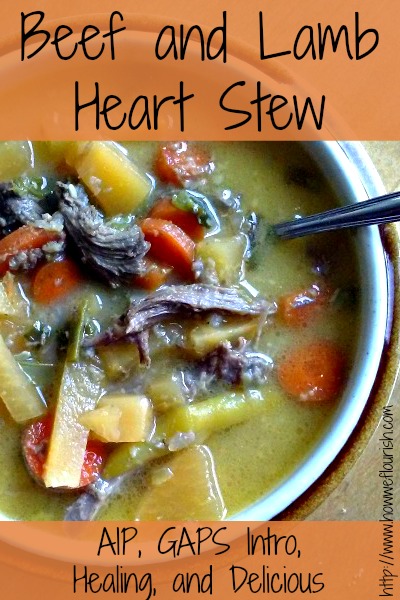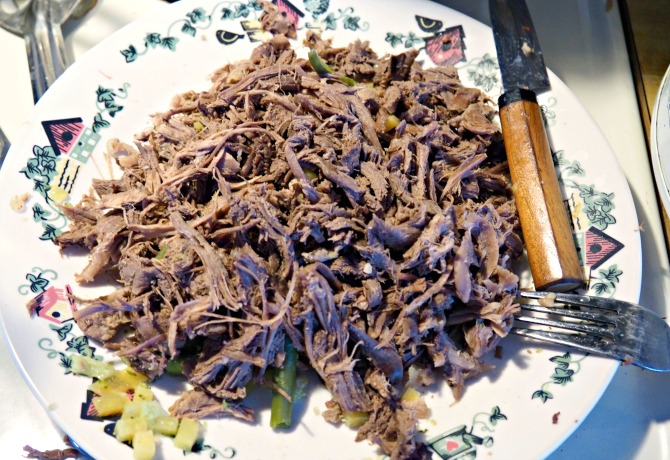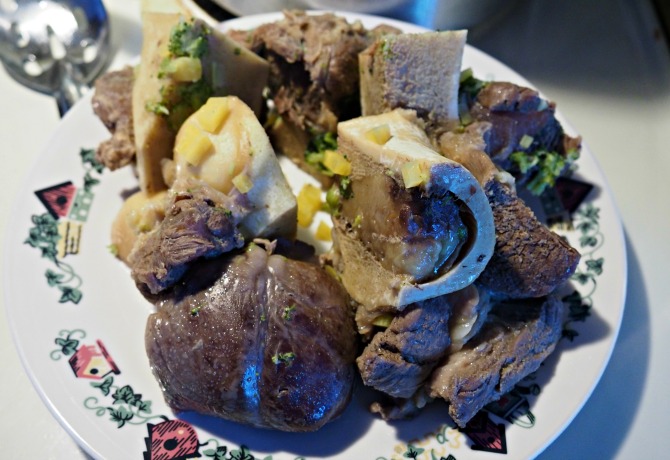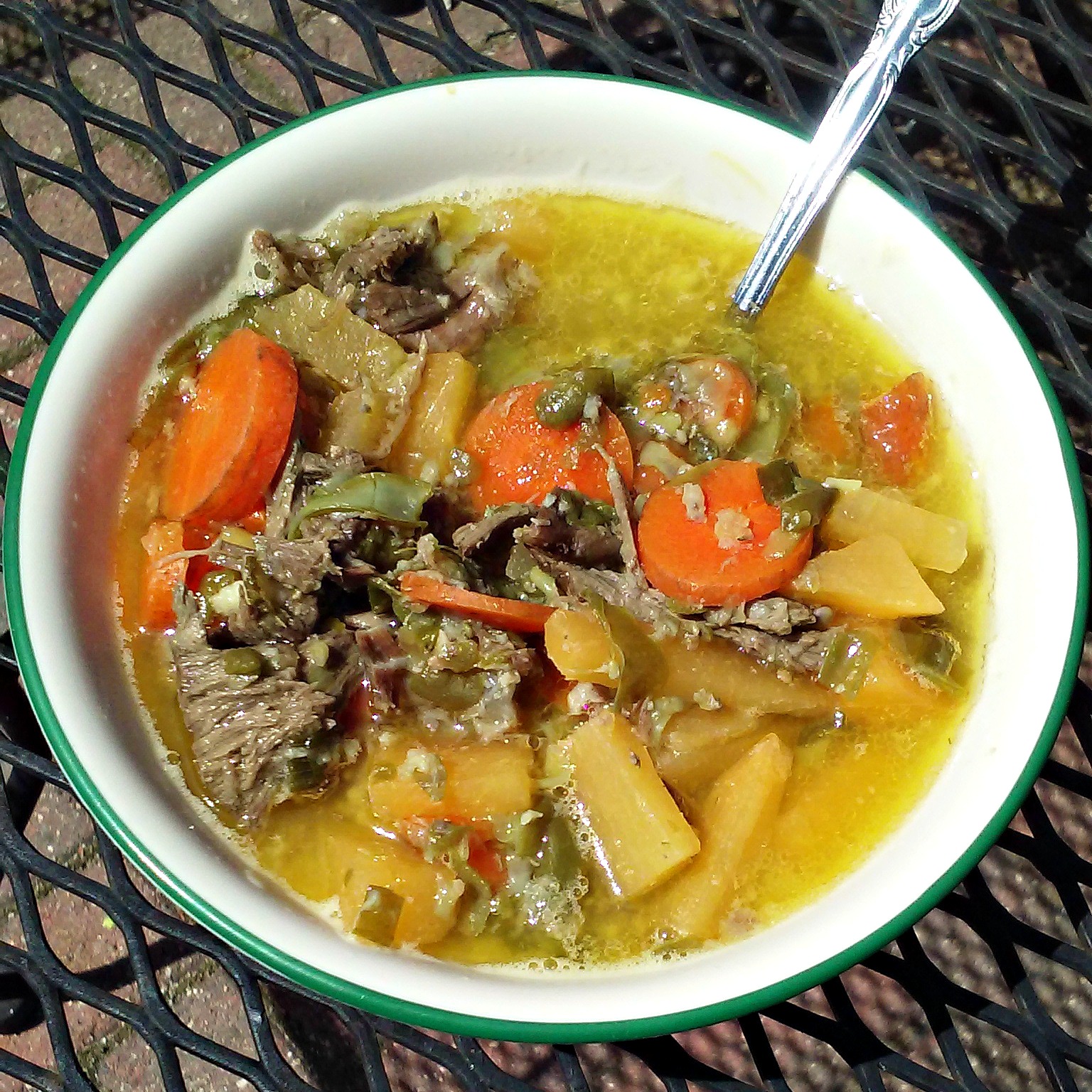I may receive a commission if you purchase something mentioned in this post. See more details here.
I have tried to learn to love organ meat. I really have. I know that they are incredibly nutrient dense and can help support my own organs. I know that it shows respect to the animal by eating all its parts. I know that they are a very cheap way to get to high quality meats. But until I made lamb heart stew, I just couldn’t do it.
I tried beef tongue, but I don’t think I made it right. It tasted fine, but had a weird texture. Liver is just awful. I have tried it many different ways, and the best I could do was highly diluting it with ground meat and making meatloaf. It was fine, but a lot of work and not perfect. Beef heart had a good texture and a much more mild flavor, but it is still a bit organ-y. I am really hoping that as my body heals and my taste buds adjust I can tolerate these nutrient packed, money saving foods!

Then some Instagram friends told me about how delicious lamb heart is. As luck would have it, my local farm has lamb hearts for $2.50 each. They are quite small, and I haven’t weighed them out to figure out how much they are per pound. But they are certainly cheaper than any other lamb meat. And WOW they are delicious! I find the taste to be very similar to grass fed beef. When shredded and made into a dish, I can’t tell the difference.

Shredded meat for beef and lamb heart stew – can’t tell which is which!
I knew than I had to start make one of these hearts into a soup while on GAPS Intro to really amp up my healing soups. To add more meat, fat, and healing tissues, I used a package of beef soup bones as well. You should have seen me while making this soup! I was absolutely giddy about how healing and nutrient dense this beef and lamb heart stew would be. I called it my “happy soup.”
Healing Beef and Lamb Heart Stew
This soup takes some time to make: the beef bones and the lamb heart cook for about 3 hours. This creates a rich, healing broth and tender meat than shreds easily into your soup. Then by adding a whole ton of vegetables, you further increase the nutrient density of this soup. I always fill my 3 quart mixing bowl with some combination of vegetables – rutabaga, carrots, broccoli, cauliflower, zucchini, peas and green beans (for GAPS or AIP reintroduction), and leafy greens are some of my favorites.

Cooked bones and heart – check out that marrow my soup got!
The real key to this incredibly healing soup is my trick of pureeing connective tissues. After the meat is cooked, I remove everything from the bones, including any marrow that may be exposed. The meat gets shredded and added to the soup. But I also take all the extra fat, marrow, and the extensive connective tissue that comes with soup bones and puree it in my blender. A high powered blended, like a Vitamix, is ideal. The better the blender, the smoothing the puree will be. Larger or tougher bits of tissue should be cut smaller. I hate chewing those tissues, and the blender eliminates that need. It just leaves an incredibly healing liquid that turns your soup into gold!
This soup is lovely and delicious just as it is – as an AIP and GAPS Intro Stage One soup. So yum.
This simple, frugal and nutrient dense soup is safe for everyone, regardless of food restrictions. But most importantly, it is delicious!
Ingredients
- 1 package beef soup bones (2-3 pounds)
- 1 lamb heart
- Filtered water
- 12 cups vegetables, chopped
- Salt to taste
Instructions
- Place soup bones and lamb heart into a large pot. Cover with water.
- Bring to a boil, then reduce to a simmer. Cook for 3 hours. Check periodically that there is enough water in the pot.
- While the meat is cooking, wash, peel, and chop any vegetables you are using.
- After 3 hours, remove the meat and bones from the broth.
- Add the vegetables to the pot. Bring to a boil and reduce to a simmer. Cook for 30 minutes.
- While the vegetables are cooking, shred the beef and lamb heart. This is easiest with your fingers. Use a paring knife to cut the meat and connective tissues off the bone and apart from each other.
- Place all connective tissues and extra fat into a blender. Cover with broth from your pot. Blend until smooth.
- When the vegetables are done cooking, add the meat and puree back into the soup.
- Serve, salt to taste, and enjoy! See notes for serving ideas.
Notes
Serving suggestions: This soup has lots of good fats, but will also be delicious with tallow, lard, or ghee (stage two) added if you wish. An egg yolk (stage two) will add even more depth of flavor and nutrient density.
This recipes freezes well.
Shared on AIP Recipe Roundtable, Allergy Free Wednesday, and GAPS Recipe Roundup.
Like what you see? Please support this blog and help me keep it running by signing up for my newsletter, purchasing products, or donating through the links below:
DISCLOSURE: In order for me to support my blogging activities, I may receive monetary compensation or other types of remuneration for my endorsement, recommendation, testimonial and/or link to any products or services from this blog. The information contained in this post is not intended nor implied to be a substitute for professional medical advice, it is provided for educational purposes only. You assume full responsibility for how you choose to use this information. For more information, click here.




Seriously, everyone of your soups looks so hearty and nourishing. If I had to eat that much soup, I would want to eat your soups!
Thanks, Linda! That’s my goal. 🙂
My hubby loves stew – this recipe looks great!!
Mmm, it all looks delicious– the beef marrow bones and the heart. I really enjoy heart and love lamb. Glad you found something that tastes good in the organ world!! 🙂 We just slice heart and fry it up like steak.
Oooo…That sounds yummy, too!
I love all of your healing + nourishing recipes. What a nutrient dense soup.
Thank you!
I can see why you would call this your happy soup. I have never cooked organ meats myself but I may just have to give this a try!
Try it! I hope you like it!
Hi Chloe. I highlighted this recipe as one of my faves at this week’s Paleo AIP Recipe Roundtable. Here’s to nutrient-density! 🙂
That’s great! Thank you so much!
Is it necessary to skim the surface of the water while the bones and heart are simmering? I’m making it now, and there’s foam and particles rising and collecting on the surface. Thank you!
You can, but it is not necessary.
I highly suggest soaking your liver in something acidic (I use lemon juice). I cut it up into fairly small pieces (about an inch or less), soak for about 30 minutes, rinse, pat dry and then go on with the recipe. Total game changer!
I’ll have to try this recipe as I just signed up for a local meat CSA I’m looking for ways to cook heart so I can get in a greater variety of organ meats.